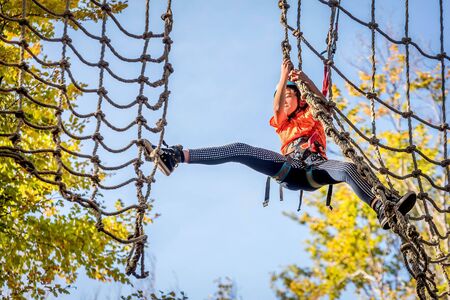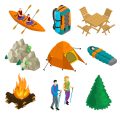Why Minnesota is a Hiker’s Paradise
When it comes to hiking, Minnesota stands out as one of America’s hidden gems. From its sparkling blue lakes and endless forests to its ever-changing seasons and friendly outdoor communities, the North Star State offers something for every hiker. Here’s what makes Minnesota a top destination for trail lovers of all levels.
Land of 10,000 Lakes
Minnesota isn’t called the “Land of 10,000 Lakes” for nothing—there are actually more than 11,000 lakes scattered across the state! These lakes create stunning backdrops for countless trails, offering peaceful waterside strolls and dramatic cliffside hikes alike. Whether you’re trekking around Lake Superior on the North Shore or exploring the crystal-clear waters in Itasca State Park, you’ll always be close to nature’s best.
Expansive Forests and Wilderness Areas
Minnesota is home to millions of acres of wild forests, including the iconic Boundary Waters Canoe Area Wilderness and vast stretches of pine, birch, and maple. Trails wind through dense woods where you can spot deer, loons, and even the occasional moose. These forested areas make hiking here feel like a true escape from city life.
Varied Seasons: A New Adventure Every Visit
One of the most unique aspects of hiking in Minnesota is how different each season feels:
| Season | What to Expect |
|---|---|
| Spring | Wildflowers bloom along trails, rivers swell with melted snow, and wildlife emerges from winter. |
| Summer | Long days are perfect for lake swimming after a hike. Lush green forests offer cool shade. |
| Fall | The leaves turn brilliant shades of red, orange, and yellow—fall foliage hikes are a must-see! |
| Winter | Snow turns trails into quiet wonderlands—try snowshoeing or winter hiking for a whole new experience. |
Minnesota’s Welcoming Trail Culture
The people of Minnesota are known for being “Minnesota Nice,” and this extends to the hiking community. Trailheads are often well-marked and maintained by local volunteers. Don’t be surprised if you get a friendly wave or some helpful tips from fellow hikers. Whether you’re solo or with friends, you’ll feel right at home on Minnesota’s trails.
2. Must-Visit Hiking Destinations
Minnesota is a hiker’s dream, packed with scenic trails, peaceful forests, and sparkling lakes. Whether you’re new to hiking or a seasoned explorer, there are destinations here you just can’t miss. Here’s a look at some of the top spots across the Land of 10,000 Lakes.
Superior Hiking Trail
Stretching over 300 miles along Lake Superior’s rugged North Shore, the Superior Hiking Trail is one of the Midwest’s most famous long-distance routes. Expect dramatic cliff views, waterfalls, dense forests, and plenty of wildlife. Whether you tackle a quick day hike or plan a multi-day backpacking trip, this trail offers something for everyone.
Boundary Waters Canoe Area Wilderness (BWCAW)
While it’s best known for paddling adventures, the Boundary Waters also boasts remote hiking trails that wind through pristine wilderness. You’ll find pine forests, quiet lakeshores, and opportunities for spotting moose or bald eagles. If you crave solitude and true backcountry vibes, this is your spot.
Itasca State Park
As Minnesota’s oldest state park and the headwaters of the mighty Mississippi River, Itasca State Park is both historic and beautiful. The park features family-friendly hikes through old-growth pine forests and boardwalks across wetlands. Don’t miss the chance to walk across the stones where the Mississippi begins!
Hidden Local Gems
Beyond the big-name parks, Minnesota is sprinkled with lesser-known trails perfect for peaceful day hikes and local adventures. Here are some favorites:
Trail/Park |
Location |
What Makes It Special? |
|---|---|---|
Afton State Park |
St. Croix River Valley | Rolling prairies, wooded ravines, and great river views |
Sibley State Park |
West-Central Minnesota | Pleasant hills and scenic overlooks from Mount Tom |
Lebanon Hills Regional Park |
Twin Cities Metro Area | Miles of easy-to-moderate trails close to Minneapolis-St. Paul |
Jay Cooke State Park |
Northeastern Minnesota | Dramatic swinging bridge over the St. Louis River gorge |
No matter where you roam in Minnesota, you’ll find hiking trails that suit every skill level—each offering its own unique slice of natural beauty.
![]()
3. Essential Gear and Safety Tips
Be Ready for Minnesota’s Unpredictable Weather
Minnesota is known for its ever-changing weather, especially if you’re hitting the trails near its lakes or deep in the forests. Even in summer, temperatures can shift quickly. Locals recommend always checking the weather forecast before heading out, but it’s smart to pack layers just in case. A waterproof jacket, moisture-wicking base layers, and a warm hat are essentials—even in late spring or early fall.
Recommended Clothing for Minnesota Hikes
| Item | Why You Need It |
|---|---|
| Waterproof Jacket | Protects against sudden rain and wind |
| Moisture-Wicking Base Layer | Keeps sweat off your skin and helps regulate temperature |
| Insulating Layer (Fleece or Down) | Keeps you warm during chilly mornings or evenings |
| Hat & Gloves | Essential for cool mornings and nights, even in summer |
| Sturdy Hiking Boots | Provides grip on muddy or rocky trails and ankle support |
| Bug Spray & Sunscreen | Mosquitoes are fierce, and sunburns happen fast on open trails |
Wildlife Encounters: What to Know and Carry
Minnesota’s wilderness is home to black bears, deer, moose, wolves, and plenty of smaller critters. While most animals will keep their distance, it’s important to be prepared. Make noise while hiking to avoid surprising wildlife—locals often carry bear bells or simply chat with friends as they walk. Store food securely, ideally in a bear-proof container if you’re camping overnight.
Quick Wildlife Safety Checklist
- Stay on marked trails—this helps you avoid animal dens and nests.
- Keep dogs leashed to protect both pets and wildlife.
- If you see a bear: stay calm, back away slowly, and don’t run.
- Avoid hiking at dawn or dusk when many animals are most active.
- Carry bear spray if you’re trekking in remote northern areas.
The Local’s Gear List for Safe and Comfortable Hiking
Minnesota hikers have their favorite gear for staying safe and comfortable. Here’s what locals recommend bringing along for day hikes and longer adventures:
| Gear Item | Description / Tip from Locals |
|---|---|
| Daypack (15-25L) | Carries your essentials without weighing you down |
| Map & Compass (or GPS) | Cell service can be spotty; know how to navigate old-school style too! |
| First Aid Kit | Packed with bandages, blister care, pain relievers, allergy meds, and insect bite ointment |
| Water Bottle or Hydration Bladder (at least 1-2 liters) | Lakes look inviting but always filter before drinking—carry enough clean water for your hike! |
| Snacks (Trail Mix, Jerky, Energy Bars) | You’ll burn more calories than you think—Minnesota trails can be tough! |
| Trekking Poles (optional) | Saves your knees on steep or muddy terrain; many locals swear by them in the Northwoods. |
| Trowel & TP (Leave No Trace kit) | If nature calls far from restrooms—always bury waste 6-8 inches deep and pack out used TP. |
A Few More Tips from Minnesota Hikers:
- Pace yourself—many local trails are rugged with roots and rocks.
- Let someone know where you’re going before heading out.
- Carry a whistle for emergencies; three short blasts is a universal distress signal.
- If hiking near lakes or rivers, bring a lightweight towel—you might want to dip your toes!
With the right gear and a little local know-how, your Minnesota hiking adventure will be both safe and memorable!
4. Hiking Etiquette and Conservation
Respecting Nature: The Leave No Trace Principles
When exploring Minnesota’s breathtaking lakes, lush forests, and wild trails, it’s essential to follow the Leave No Trace (LNT) principles. These seven simple guidelines help keep our natural spaces pristine for generations to come.
| Leave No Trace Principle | How to Practice It in Minnesota |
|---|---|
| Plan Ahead and Prepare | Check weather, know your route, pack essentials, and understand local regulations. |
| Travel and Camp on Durable Surfaces | Stick to marked trails and established campsites to protect fragile habitats like wetlands and prairies. |
| Dispose of Waste Properly | Pack out all trash, leftover food, and litter. Use bathroom facilities when available or bury waste at least 200 feet from water sources. |
| Leave What You Find | Don’t pick wildflowers or remove rocks. Preserve Minnesota’s unique ecosystems by leaving nature untouched. |
| Minimize Campfire Impact | Use camp stoves when possible. If fires are allowed, use existing rings and keep them small. Be aware of fire bans during dry spells. |
| Respect Wildlife | Observe animals from a distance. Never feed wildlife—this protects both you and the animals. |
| Be Considerate of Others | Keep noise down, yield the trail when needed, and respect everyone’s outdoor experience. |
Trail Etiquette: Sharing the Path in Minnesota
Minnesota’s trails are popular with hikers, bikers, families, and even horseback riders. Here are some basic etiquette tips to keep everyone safe and happy:
- Yield Appropriately: Hikers going uphill have the right of way. Step aside for faster groups or those carrying heavy packs.
- Stay on Marked Trails: Protect the landscape by not cutting switchbacks or creating new paths.
- Control Your Pets: Keep dogs leashed and pick up after them to prevent disturbances to wildlife and other hikers.
- Pace Yourself: Allow others to pass if you’re moving slowly; always let people know before passing by saying “On your left.”
- Quiet Enjoyment: Keep voices low and music off unless using headphones.
Caring for Minnesota’s Natural Beauty: How You Can Help
Volunteer Opportunities
You can join local organizations like the Minnesota Rovers Outdoors Club, Superior Hiking Trail Association, or state park volunteer programs to help maintain trails and promote conservation efforts.
Sustainable Hiking Tips for Minnesota Trails
- Avoid Muddy Trails: Stick to dry paths or hike when trails aren’t muddy to reduce erosion—especially important after spring thaw or heavy rain!
- Support Local Conservation: Purchase state park passes or donate to trail organizations that keep these areas open and beautiful.
- Lend a Hand: Join a trail clean-up day or report any damage you see on your hikes.
- Educate Others: Share good hiking practices with friends and family—everyone plays a part in keeping Minnesota wild!
Your Adventure Starts With Respect—for Nature and Each Other!
The more we care for Minnesota’s trails today, the more memories we can create tomorrow. By practicing good hiking etiquette and conservation habits, you help ensure that our lakes, forests, and wilderness remain healthy places for adventure—now and for future generations.
5. Local Resources and Community
Getting the most out of your hiking adventures in Minnesota isn’t just about knowing where to go—it’s also about connecting with local resources and the vibrant outdoor community. Whether you’re new to the state or a seasoned hiker, having access to trail maps, joining clubs, gearing up at local stores, and participating in events can make your experience richer and more enjoyable. Here’s how you can tap into everything Minnesota’s hiking scene has to offer.
Where to Find Trail Maps
Having a reliable trail map is essential for any hike. In Minnesota, you can find detailed maps online, at visitor centers, and even through mobile apps designed for outdoor enthusiasts.
| Resource | Details |
|---|---|
| Minnesota DNR Website | Offers downloadable maps and info on state parks and forests: dnr.state.mn.us |
| AllTrails App | Popular app with user reviews, photos, and GPS maps of trails statewide. |
| Local Visitor Centers | Stop by when entering a park or recreation area for free printed maps and updates. |
| Outdoor Retailers | Many gear shops provide printed maps and expert advice on local trails. |
Local Hiking Clubs
If you’re looking to meet fellow hikers, join group hikes, or learn more about the best spots from locals, consider joining a Minnesota hiking club. These groups welcome everyone from beginners to experts and often host regular outings.
| Club Name | Description |
|---|---|
| Minnesota Rovers Outdoors Club | A friendly group offering hikes, paddling trips, camping, and more—open to all skill levels. |
| North Country Trail Association – MN Chapter | Focuses on maintaining and exploring the North Country National Scenic Trail across Minnesota. |
| Sierra Club North Star Chapter | Hosts guided hikes and advocates for conservation throughout the state. |
Outfitting Stores for Gear and Advice
The right gear can make all the difference. Minnesota has plenty of locally-owned outfitters ready to help you find boots, backpacks, clothing, and other essentials. Staff are often passionate hikers themselves and happy to give advice on where to go or what to bring for your next adventure.
| Store Name | Location/Website |
|---|---|
| Midwest Mountaineering | Minneapolis | midwestmtn.com |
| Duluth Pack Store | Duluth | duluthpack.com |
| The Trailhead (REI Co-op) | Plymouth & Bloomington | rei.com/stores/minnesota |
Community Events for Hikers
Minnesota’s hiking community is active year-round with events like guided nature walks, trail maintenance days, festivals, and skills workshops. These gatherings are great opportunities to learn new things, volunteer, or simply enjoy the outdoors with like-minded people.
- Afton State Park Guided Hikes: Seasonal walks led by park rangers highlighting local flora and fauna.
- Twin Cities Outdoor Expo: Annual event featuring clinics on hiking safety, navigation, gear demos, and more.
- BWCA Volunteer Days: Help maintain trails in the Boundary Waters Canoe Area Wilderness while meeting fellow outdoor lovers.
- Loppet Winter Festival: Celebrate winter sports in Minneapolis with snowshoe hikes included!
Your Next Steps in Minnesota’s Hiking Community
No matter where you are in Minnesota—from city parks in Minneapolis-St. Paul to remote forest trails up north—the state’s outdoor community is welcoming and full of resources. Don’t hesitate to stop by a local outfitter for tips or join a club event; it’s one of the best ways to deepen your connection to this beautiful state’s wild places.


